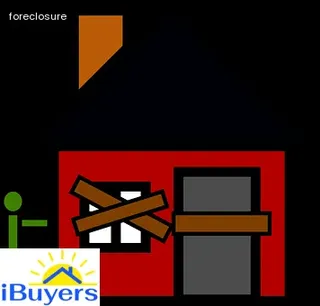California has several laws and regulations that must be followed if a homeowner enters the foreclosure process. It is important to understand these laws and how they affect the process, especially when it comes to the timeline of a foreclosure in California.
Foreclosure law in California starts with a Notice of Default, which is issued by the lender after three full payments have not been made on the loan. This document informs the borrower that their loan is in default and that a foreclosure sale date has been set.
Once this Notice of Default is issued, homeowners have 90 days to pay off their entire mortgage or enter into an agreement with their lender before the home goes up for auction. Homeowners also have the right to a reinstatement period, during which time they can catch up on missed payments as well as any additional fees associated with those payments.
If they are unable to do so, then they will lose their home and all equity built up in it upon completion of the auction sale. Understanding these laws will help homeowners make informed decisions about their next steps when facing foreclosure in California.

Navigating the foreclosure process in California can be a daunting task, especially for those unfamiliar with it. Before beginning the foreclosure process, homeowners must go through several pre-foreclosure steps and procedures.
This includes sending out a Notice of Default to the borrower which informs them that they are in default and how much money is owed. Afterward, homeowners will typically have 90 days to make up their missed payments or attempt to sell the property before proceeding to foreclosure.
During this time, lenders may also choose to pursue other alternatives such as loan modifications or repayment plans. Once the 90-day period has passed without any action from the borrower, the lender may proceed with foreclosure proceedings.
It is important for homeowners to understand all of these pre-foreclosure steps and procedures so that they can take advantage of any opportunities available which could help prevent their home from going into foreclosure.
In California, homeowners have the right to receive a notice of default and right to cure before foreclosure proceedings can begin. This notice must inform the homeowner of their right to request mediation with their lender in order to attempt to resolve the delinquency without going into foreclosure.
The mediation process is free for homeowners and must take place within 30 days of the date on the notice of default. If the homeowner does not request mediation or if mediation fails, then they have up to 90 days from the date of the notice of default before they are subject to foreclosure proceedings.
Additionally, during this time period, homeowners are protected from “dual tracking” which is when lenders try to pursue both a loan modification and foreclosure simultaneously. Homeowners also have a right to know who owns their mortgage loan so that they can communicate directly with their lender about any issues or questions that arise.
Finally, California has a Foreclosure Hotline that provides free legal advice for homeowners facing foreclosure.

Foreclosure scams can be a dangerous and costly situation, especially for those already in financial trouble. In California, homeowners facing foreclosure must be aware of the possibility of being targeted by such schemes.
It is important to understand some basic tips on how to protect yourself from falling victim to an unscrupulous individual or organization offering relief that may not be real. Firstly, never pay money up-front for any type of assistance related to foreclosure prevention; reputable organizations will not ask you to do this.
Secondly, research all companies offering services related to foreclosure and confirm they are legitimate with the California Attorney General's Office or your local Better Business Bureau. Thirdly, never sign any documents without first having a lawyer review them and make sure you understand the legal consequences of signing such documents.
Lastly, if something seems too good to be true it probably is; do not let yourself be pressured into making hasty decisions that could later have negative repercussions on your finances or credit score.
Stopping a foreclosure in California can seem daunting, however there are strategies to consider that may be able to help. One option is to negotiate with the lender in order to come up with a repayment plan, or an alternative solution such as refinancing the loan.
If you are behind on payments it is important that you contact the lender as soon as possible and express your interest in averting foreclosure. Another strategy is to look into local state programs that may offer assistance.
You can also consult with a HUD-approved housing counselor who can provide advice on managing debt and avoiding foreclosure. Finally, depending on your financial situation, you may be able to take advantage of Chapter 13 bankruptcy protection which allows individuals to reorganize their debts and keep their homes while repaying creditors over time.
It is important to note that these strategies should not be taken lightly and require sufficient research and preparation prior to taking action.

In California, there is a law that protects homeowners from deficiency judgments. This means that in the event of foreclosure, lenders are unable to pursue a borrower for the difference between the sale price and remaining loan balance.
This is an important factor in considering foreclosure in California as it provides homeowners with some financial security after losing their homes. Moreover, this law results in shorter foreclosure timelines as lenders have less incentive to drag out the process.
For instance, if lenders don’t have to worry about deficiency judgments, they can quickly move through the foreclosure process without having to wait for a court judgment or other legal procedure. In fact, most foreclosures in California take only 4-6 months on average from start to finish.
Once the foreclosure process is complete and the property is sold, what happens next? In California, the timeline for post-sale proceedings can vary depending on several factors. When a lender takes ownership of a property through foreclosure, they may choose to sell it as-is, rent it out as an investment, or pursue a short sale.
If they opt to sell it as-is, the property must be in livable condition; otherwise the new owner will be responsible for any necessary repairs. For rental purposes, the state has mandated minimum standards that must be met in order to ensure tenant safety and comfort.
As for short sales, if approved by the lender and accepted by the buyer, then they can proceed with settlement just as with any other real estate transaction.

The foreclosure process in California can vary depending on the individual case. Generally, it takes anywhere between three to six months for a lender to complete the process.
A Notice of Default is issued by the lender after a borrower fails to make payments, and this initiates the foreclosure proceedings. Following this, a Notice of Trustee Sale is sent out and typically published in newspapers or other public venues.
This notice provides information on when and where the property will be auctioned off. After this, if no third party bidder purchases the property at auction, ownership is transferred back to the lender.
The entire process typically takes about four months but can take much longer if there are legal issues that need to be addressed. It's important for those facing foreclosure to understand their rights and timelines for their specific situation so they can make informed decisions about their financial future.
When it comes to foreclosures in California, there are several different types of foreclosure processes that can be used. The most common type is a judicial foreclosure, which involves the court system and typically takes the longest amount of time.
A non-judicial foreclosure is another option that does not involve the court and typically happens faster than a judicial foreclosure. Although this type of foreclosure is more popular in some states, it's not allowed in all parts of California.
Another type of foreclosure process in California is a power of sale, which allows for the lender to take back the property without going through court proceedings. Lastly, a strict foreclosure may also be used in certain cases; this involves the lender taking title to the property immediately if payments are not made on time.
It's important to understand which type of foreclosure process applies to your situation as each has its own timeline for completion.

If you are facing a foreclosure in California and can no longer afford your mortgage payments, it is important to take proactive steps to protect yourself and your financial interests. Firstly, contact your loan servicer as soon as possible and let them know that you’re having difficulty making payments.
Your loan servicer may be able to offer assistance in the form of a loan modification or other options that could help you avoid foreclosure. Additionally, speak to a HUD-approved housing counselor who will be able to provide free advice and guidance on what steps you should take next.
You may also wish to consider selling the property if it is possible to do so. Be aware that if you do not pay your mortgage or make arrangements with your lender, they may begin the foreclosure process by publishing a Notice of Default (NOD).
This document will give you 90 days from its publication date to catch up on your mortgage payments or reach an agreement with the lender before they can begin the foreclosure sale.
Preforeclosures can be incredibly stressful and intimidating, but understanding their impact on homeowners is the key to navigating the process. In California specifically, preforeclosure is a period of time when a homeowner has defaulted on mortgage payments and faces the possibility of foreclosure.
During this period, lenders may use various methods to encourage the homeowner to pay off debts or renegotiate terms in order to avoid foreclosure. It's important for homeowners to understand their rights during preforeclosure so they can make informed decisions about how best to handle their financial situation.
This includes researching local laws and regulations, understanding timelines for payment and negotiation, finding potential assistance programs, and consulting with legal professionals who can provide further advice. Knowing all these details is an essential part of successfully navigating foreclosures in California, as it ensures that homeowners are aware of their options and can make timely decisions that will have long-term impacts on their finances.

Foreclosures in California can be a long and complex process, so it is important to understand your rights as a homeowner and how to protect yourself from predatory lenders throughout the process. Knowing the foreclosure laws in California can help you navigate the process and understand what steps to take if your lender is not acting appropriately.
First, it is important to remember that no lender can take away your home without a court order in California. If you are served with a notice of default, you have 90 days before your lender can file for foreclosure with the court.
During this time, you should look into all possible options such as loan modification or refinancing to save your home. You also have the right to challenge any errors or violations by your lender if they do not follow proper procedure, such as failure to provide proper documentation or notification of foreclosure proceedings.
Additionally, you should consult an attorney who specializes in foreclosure law if you are unsure of how to proceed. Lastly, make sure that all paperwork is kept on file and that any payments made are documented to ensure that everything has been properly handled in accordance with state law.
By taking these steps and understanding your rights during the foreclosure process in California, you can protect yourself from lenders who may be taking advantage of the situation.
When facing foreclosure in California, it is important to understand both your rights under state and federal laws. The first step is to check with your bank or lender to see if they offer any loan modification options that could help you avoid foreclosure entirely.
If a loan modification is not available, then you will need to familiarize yourself with the foreclosure process in California. Depending on the type of loan you have, the process can take anywhere from 60 days to several years.
Knowing what rights you are afforded by state and federal laws during this time is key; for example, lenders must provide a notice of default before moving forward with foreclosure proceedings, and they might be required to provide assistance programs or forbearance opportunities instead of foreclosing. It is also important to know that homeowners have the right to challenge or dispute their foreclosure in court if they believe their rights have been violated.
Understanding your rights throughout the foreclosure process can help ensure that the process runs smoothly and that your legal rights are protected.

If you are facing foreclosure in California, it can be a difficult process to navigate. It is important to understand the process and find appropriate help during this time.
Due to the nature of foreclosures, it is essential that individuals act quickly and wisely. One of the first steps should be to speak with a financial advisor or lawyer who understands foreclosure laws in California and can provide sound advice regarding your options.
Knowing how long the process takes is key; some lenders may take several months before beginning proceedings, whereas others may move more swiftly. Additionally, some lenders may be willing to work out a payment plan or loan modification agreement so that you can stay in your home.
Seeking out assistance from local housing counselors or nonprofit organizations can also prove beneficial as they have experience in navigating foreclosure procedures and can help you explore available resources such as government programs that could provide financial aid or other forms of assistance. These professionals can identify any potential issues that might arise while dealing with your lender or bank, and provide valuable guidance throughout the entire foreclosure process.
When it comes to foreclosure in California, the length of time you can remain in your home after the foreclosure process begins will depend on a variety of factors. In some cases, homeowners may be able to stay in their homes for months or even years after the initial foreclosure process has begun.
To ensure you are fully informed about how long you can remain in your home after foreclosure, there are several important steps you should take. First, contact your mortgage lender to find out if they have established any post-foreclosure timelines for California homeowners.
Next, review the local laws and regulations regarding foreclosures in order to gain an understanding of what is required of you as a homeowner during this process. Finally, consult with a legal professional who is well-versed in California's foreclosure laws to ensure that all relevant deadlines are met and that your rights as a homeowner are protected throughout the duration of the process.
By taking these steps, you can rest assured that you fully understand how long you can stay in your home after foreclosure in California.

California's most common foreclosure process is known as a Non-Judicial Foreclosure. This type of foreclosure allows the lender to complete the entire process without any court appearances or judicial review.
The process usually takes between three and six months, depending on the complexity of the case and other factors. During this time, the homeowner will receive notices from the lender, including a Notice of Default and Notice of Trustee's Sale.
Once these notices have been issued, the homeowner has 90 days to cure any past due payments or face foreclosure proceedings. After that period has passed, a Trustee's Sale can be held where ownership of the property can be transferred to a new owner if no one bids higher than what is owed by the homeowner on the loan.
The average foreclosure process in California takes approximately 6 months from start to finish. Every case is different and some may take longer or shorter.
Generally, the foreclosure process begins when a Notice of Default (NOD) is filed with the County Recorder’s Office by the lender. This signifies that the borrower has defaulted on their loan and has failed to make payments.
After this, a Notice of Sale is issued and published in a local newspaper at least three times. A Trustee Sale is then conducted at which point ownership of the property transfers to the highest bidder.
The borrower must then vacate the premises within 20 days unless they are able to reinstate their loan prior to auction. In certain cases, borrowers may be eligible for mediation programs which can extend the timeline significantly.
It’s important for borrowers to understand their rights during this process and contact an experienced foreclosure attorney if needed as soon as possible.
Foreclosure is a long and complex process, especially in California. Depending on the county, it can take anywhere from three months to as long as two years before a home is foreclosed upon.
The primary factor that determines how quickly the foreclosure process will take place is the particular county’s foreclosure laws and procedures. In California, counties must follow specific rules that require lenders to provide certain notices to the homeowner throughout the foreclosure process.
Once these notices are given, homeowners are typically provided with 90 days or more to work out payment arrangements or negotiate a loan modification before foreclosure proceedings begin. After this period has expired, banks may then proceed with filing a Notice of Default (NOD) and begin the legal steps necessary for foreclosure proceedings to start.
Once an NOD has been filed, borrowers have up to six months before their home can be sold at auction. The total amount of time it takes for a bank to foreclose on a home in California will depend largely on whether or not homeowners take action during this timeline.
If they do not respond to the lender's attempts at contact, then the process can move much faster than if they reach out and try to resolve their debt issues through negotiation or loan modification.